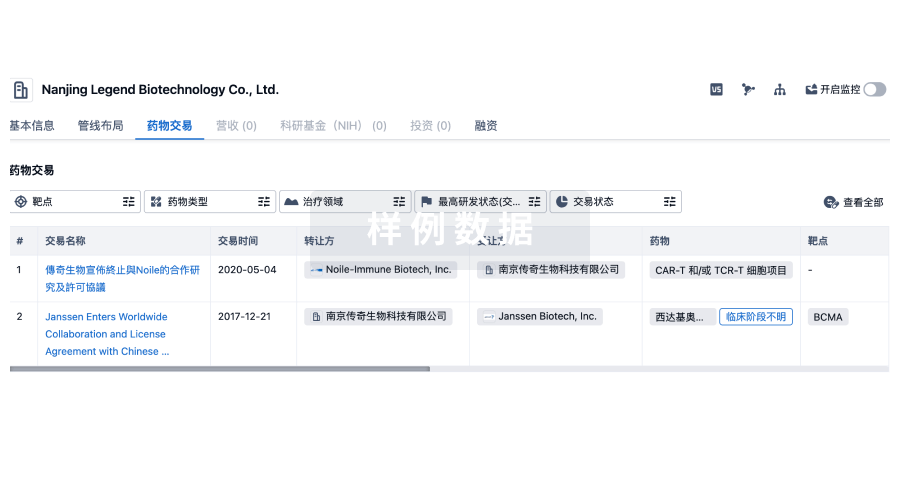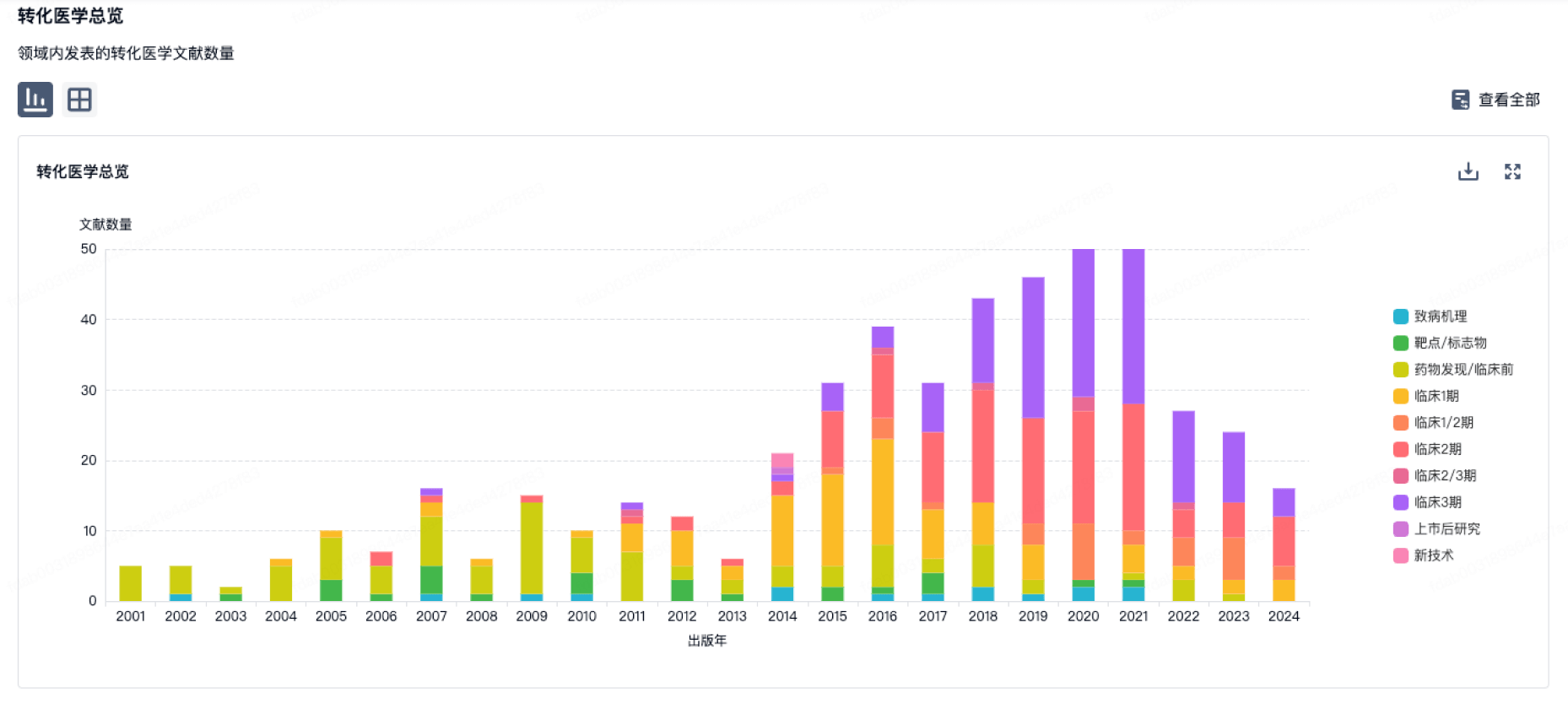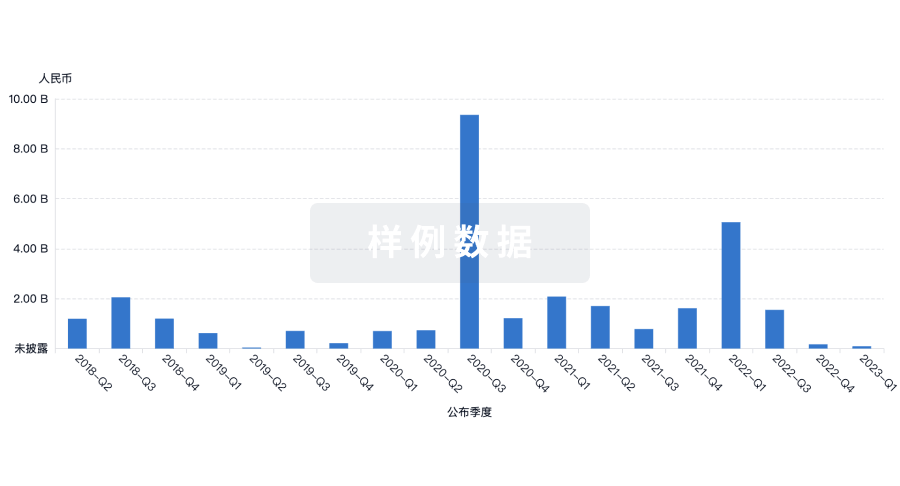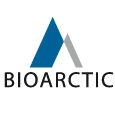预约演示
更新于:2025-11-23

Eisai Co., Ltd.
更新于:2025-11-23
概览
标签
肿瘤
其他疾病
神经系统疾病
小分子化药
单克隆抗体
化学药
疾病领域得分
一眼洞穿机构专注的疾病领域
暂无数据
技术平台
公司药物应用最多的技术
暂无数据
靶点
公司最常开发的靶点
暂无数据
| 排名前五的药物类型 | 数量 |
|---|---|
| 小分子化药 | 106 |
| 单克隆抗体 | 16 |
| 化学药 | 6 |
| ADC | 3 |
| 未知 | 2 |
关联
152
项与 Eisai Co., Ltd. 相关的药物作用机制 FGFR1拮抗剂 [+2] |
在研机构 |
原研机构 |
在研适应症 |
非在研适应症 |
最高研发阶段批准上市 |
首次获批国家/地区 日本 |
首次获批日期2024-09-24 |
靶点 |
作用机制 APP抑制剂 |
在研机构 |
原研机构 |
非在研适应症- |
最高研发阶段批准上市 |
首次获批国家/地区 美国 |
首次获批日期2023-01-06 |
作用机制 α4β1拮抗剂 [+1] |
在研适应症 |
非在研适应症- |
最高研发阶段批准上市 |
首次获批国家/地区 日本 |
首次获批日期2022-03-28 |
1,018
项与 Eisai Co., Ltd. 相关的临床试验NCT04645602
A Pilot Study of Lenvatinib in Combination With Pembrolizumab in HPV-associated Recurrent Respiratory Papillomatosis Patients
This research study is studying Lenvatinib in combination with Pembrolizumab in people with human papillomavirus (HPV)-associated recurrent respiratory papillomatosis (RRP).
The names of the study drugs involved in this study are:
* Pembrolizumab
* Lenvatinib
The names of the study drugs involved in this study are:
* Pembrolizumab
* Lenvatinib
开始日期2025-07-18 |
申办/合作机构  Yale University Yale University [+2] |
NCT06793709
Post-marketing Observational Study of Tasfygo Tablet 35 mg to Evaluate the Safety of Tasfygo in Patients With Unresectable Biliary Tract Cancer With FGFR2 Fusion Gene Positivity Who Progressed After Chemotherapy
The primary purpose of this study is to investigate the safety of Tasfygo.
开始日期2025-07-10 |
申办/合作机构 |
NCT06964113
A Multi-center, Open-Label, Single-Arm, Phase 4 Study to Evaluate the Efficacy and Safety of Filgotinib 200 mg in Korean Patients With Moderately to Severely Active Ulcerative Colitis Under Routine Clinical Practice
The primary purpose of this study is to evaluate the efficacy of filgotinib in establishing clinical remission at Week 10 or 22.
开始日期2025-06-11 |
申办/合作机构  Eisai Korea, Inc. Eisai Korea, Inc. [+1] |
100 项与 Eisai Co., Ltd. 相关的临床结果
登录后查看更多信息
0 项与 Eisai Co., Ltd. 相关的专利(医药)
登录后查看更多信息
3,237
项与 Eisai Co., Ltd. 相关的文献(医药)2025-12-01·JOURNAL OF NEUROIMMUNOLOGY
Peripheral CD56dimCD16+ NK cells correlate with serum NfL and ALS progression: An exploratory immunophenotyping analysis
Article
作者: Ayaki, Takashi ; Taguchi, Ryota ; Takahashi, Ryosuke ; Tamura, Ryota ; Urushitani, Makoto ; Yamada, Tomohiro ; Wada, Hideki
BACKGROUND:
Peripheral immune dysregulation may contribute to the pathogenesis of amyotrophic lateral sclerosis (ALS), yet, specific immunophenotypes correlated with disease progression remain unclear. We conducted an exploratory analysis to identify peripheral immune cell subsets correlated with ALS progression and serum biomarkers.
METHODS:
Multicolor flow cytometry was used to evaluate 55 immune cell subsets in peripheral blood from 16 ALS patients. We assessed correlation with clinical progression (defined by monthly decline in the ALS Functional Rating Scale-Revised) and serum biomarkers: neurofilament light chain (NfL), glial fibrillary acidic protein (GFAP), and estimated glomerular filtration rate (eGFR).
RESULTS:
CD56dimCD16+ natural killer (NK) cells were inversely correlated with both ΔALSFRS-R and serum NfL, and also showed a significant correlation with GFAP. Naive B cells positively correlated with ΔALSFRS-R. Monocyte subsets were differentially correlated with eGFR. Among all cells examined, CD56dimCD16+ NK cells were the only subset significantly correlated with three clinical and biological measures.
CONCLUSIONS:
CD56dimCD16+ NK cells showed consistent correlations with ALS progression markers, although this exploratory study has small sample size and lacks healthy and disease controls, limiting conclusions in terms of statistical power and ALS-specificity about the observed immune alterations. These preliminary findings support the utility of immunophenotyping in ALS biomarker research and warrant validation in larger cohorts.
2025-12-01·JOURNAL OF PHARMACOKINETICS AND PHARMACODYNAMICS
A QSP PDE model of ADC transport and kinetics in a growing or shrinking tumor
Article
作者: Ross, David S ; Cabal, Antonio
When a tumor is treated with an antibody-drug conjugate (ADC) complex biochemistry occurs in a domain-the tumor-whose size and structure are changing. Some parts of the tumor may be growing because tumor cells proliferate. Other parts may be stagnant, or nearly so, because the cells there have been damaged by the cytotoxin. Still others may be shrinking because the cells there have been killed by the cytotoxin and are being cleared. Chemical concentrations within the tumor, which influence kinetics and transport, change as the tumor grows or shrinks. Cell surface antigen, to which ADCs are designed to bind, is lost when cells are cleared and is freshly introduced when cells proliferate. For these reasons, and because shrinking the tumor by killing its cells is the purpose of ADC treatment, it is important in a quantitative systems pharmacology (QSP) approach to the problem to model the evolution of tumor size and structure over the course of ADC treatment. In this paper we present a partial differential equation (PDE) model of ADC transport and kinetics in a growing and shrinking Krogh cylinder tumor. We present results of several studies we performed with the model, including an antigen concentration study that shows tumor growth inhibition to be non-monotone as a function of antigen concentration, and a study of the effects of co-administration of mAb and ADC that shows that the greater the delay between mAb and ADC administration the less the effect of co-administration, and which suggests the mechanism for this effect.
2025-12-01·Sleep medicine: X
Self-reported sleep variables, sleep quality, and quality of life assessment in transition to lemborexant in patients with Insomnia: the multicenter, open-label SOMNUS study
Article
作者: Ohshima, Hayato ; Uchimura, Naohisa ; Hirota, Susumu ; Murotani, Kenta ; Hayashida, Kenichi ; Koebis, Michinori ; Habukawa, Mitsunari ; Taninaga, Takehiro ; Ariyoshi, Yu ; Harada, Daisuke ; Ozone, Motohiro ; Hiejima, Hiroshi ; Ikegami, Azusa ; Kotorii, Nozomu ; Nishi, Yurie
Aims:
Lemborexant, a dual orexin receptor antagonist, is approved for treating adults with insomnia. We present diary-based sleep parameters, self-reported sleep quality, insomnia severity, and health-related quality of life following direct transition to lemborexant from previous treatment in Japanese patients with insomnia using data from the SOMNUS Study.
Methods:
The prospective, nonrandomized, open-label, multicenter SOMNUS Study analyzed data from 90 patients across four cohorts of direct switching to lemborexant from Z-drugs (monotherapy cohort: n = 25), suvorexant (monotherapy cohort: n = 25, combination cohort: n = 21), and ramelteon (combination cohort: n = 19) up to 14 weeks.
Results:
Diary-based sleep parameters (subjective sleep onset latency, subjective wake time after sleep onset, subjective total sleep time, and subjective sleep efficiency) significantly improved after transitioning to lemborexant in the 90 patients. At 2, 6, and 14 weeks, significant reductions in Insomnia Severity Index total scores were observed (-2.6 ± 3.81, -4.4 ± 5.13, and -5.3 ± 4.80, respectively; all p < 0.0001). Self-reported sleep quality and morning alertness also showed consistent, significant improvements across all time points. Short Form-8 physical component summary and mental component summary scores demonstrated positive trends, with notable improvements observed in the overall population by the end of the study. Treatment-emergent adverse events (TEAEs) occurred in 47.8 % of patients; most were mild or moderate in severity. No serious TEAEs occurred; somnolence was the most common TEAE.
Conclusions:
These findings indicate that transitioning to lemborexant from previous insomnia treatment is efficacious in improving sleep parameters, insomnia severity, and health-related quality of life, with a favorable safety profile.
Trial registration:
NCT04742699.
3,998
项与 Eisai Co., Ltd. 相关的新闻(医药)2025-11-22
·今日头条
看病买药,谁没纠结过“原研药贵得心疼,仿制药不敢随便换”?一面是原研药十几年研发、几十亿投入换来的疗效保障,一面是普通家庭望而却步的价格标签;而医保政策就像一只“看不见的手”,一边攥着患者的用药负担,一边推着药企调整方向。2025年医保谈判首次搞“双目录”,第十一批集采又让仿制药价格大跳水,原研药集体“弃赛”成了热议焦点——医保到底是原研药的“拦路虎”,还是行业升级的“指南针”?今天用最新政策、真实案例把这事说透,不管是患者还是行业人,看完都能摸清门道!
一、先搞懂:2025医保两大新政,直接改写原研药游戏规则
今年医保最核心的变化,就是“双目录并行”和“集采规则升级”,这俩政策一落地,原研药的市场选择瞬间少了模糊地带,要么按规则降价进目录,要么放弃大众市场转战高端,没有中间路可走。
先说说10月底刚结束的2025医保谈判,最大亮点是首次搞“双目录”同步谈判:前3天是常规的国家医保乙类目录谈判,后2天专门开了商保创新药目录价格协商。简单说,以前创新药想进医保只有一条路——大幅降价换市场;现在多了个选择,既能“双报”医保+商保,也能只报商保,不用非得降到底才能触达患者。
这个机制对原研药太关键了。比如治疗癌症的CAR-T疗法,一针动辄上百万,以前想进医保几乎不可能,现在能走商保目录:合源生物的纳基奥仑赛注射液(99.9万元/针)就选了“双报”,谈判成功后既能被医保覆盖一部分,又能对接商业保险,患者负担大幅减轻;而复星凯特、药明巨诺的两款高价CAR-T(120万元+/针),因为已经覆盖了70-80款商业险,降价意愿低,就直接放弃医保,只报商保目录。
再看第十一批集采,11月初刚放榜,55种药品全部中选,但跨国原研药企几乎无一中标,很多知名原研药直接选择“弃赛”。比如糖尿病患者常用的达格列净片,10mg规格首年机构需求量高达4.63亿片,几乎相当于所有仿制药需求总和,但原研药阿斯利康报价4.36元/片,而仿制药最低才0.215元/片,差距足足20倍,自然直接出局;诺华的奥卡西平、卫材的阿伐曲泊帕等原研药,也大多放弃报价。
可能有人疑惑,集采规则不是优化了吗?这次明确医院完成协议采购量后,还有20%-40%的自主采购空间,按理说能吸引原研药参与,为啥还集体“跑路”?核心就是价格差距实在没法抹平——仿制药不用承担巨额研发成本,能给出接近成本价的报价,原研药要是降到这个价位,连研发投入都收不回,只能主动放弃集采市场。
这两大政策一叠加,原研药的市场边界被划分得明明白白:医保目录主打“性价比”,接纳愿意大幅降价的原研药和仿制药,保障大众基本用药;商保目录承接高值创新药,允许保持较高定价,满足有高端需求的患者;而集采则成了仿制药的“主场”,原研药要么低价竞争,要么干脆退出,没有第三条路。
二、原研药的“两难抉择”:降价进目录还是坚守高价?
对原研药企业来说,医保政策就像一道“必答题”,但选项只有两个:要么降价进医保/商保目录,用销量换利润;要么不降价,放弃目录内的庞大市场,靠品牌和疗效争夺小众高端市场。两种选择各有风险,没有绝对的赢家。
先说说“降价进目录”的逻辑。原研药的核心成本是研发——一款新药从实验室到上市,平均要花10-15年,投入几十上百亿,还得承担90%以上的研发失败风险。这些成本都要分摊到药品价格里,所以刚上市的原研药价格往往很高。但医保目录的核心诉求是“惠民”,想进去就得大幅降价,比如医保目录谈判历年平均降幅约61%,2024年达到63%,2025年也基本延续这个水平。
降价虽然心疼,但能换来实打实的市场份额。比如康方生物的开坦尼(治疗宫颈癌),2022年上市后先进入惠民保,积累了患者基础,后来通过医保谈判降价进入目录,销售额直接冲到33亿元,成为“惠民保→医保”的成功案例。对很多原研药来说,尤其是已经上市几年、专利快到期的品种,与其被仿制药抢占市场,不如主动降价进医保,锁定公立医院的采购份额,靠规模效应弥补降价损失。
但“双目录”机制下,降价也有了不同选择。比如卫材/礼来的阿尔茨海默症药物(年费18万)、卫材/海南先声的睡眠障碍新药(月费500-600元),都选择了“双报”医保+商保。对这类药品来说,医保能覆盖一部分基础费用,降低普通患者的门槛,商保则能承接剩余费用,避免大幅降价导致利润过低,相当于“两条腿走路”,既保证了可及性,又兼顾了利润。
再看“不降价”的选择。有些原研药企业算过账后,觉得降价进目录不划算,干脆放弃申报。比如默沙东的K药,作为知名的肿瘤免疫治疗药物,2025年就没申报任何目录。为啥?因为K药已经有了稳定的患者群体,很多患者愿意为更好的疗效支付高价,而且它在海外市场的利润已经很可观,没必要为了国内医保市场大幅降价,牺牲整体利润。
还有些高价创新药,本身目标患者群体就小,降价进医保也赚不到钱,不如专注商保市场。比如复星凯特的CAR-T疗法,120万元/针的价格,就算进了医保,报销后患者仍要承担不少费用,而且患者数量少,销量提升有限;但它已经覆盖了70-80款商业险,很多高端商业保险能全额报销,不用降价就能实现销量增长,自然没必要参与医保谈判。
不过这种选择也有风险。现在国内仿制药质量越来越高,通过一致性评价的品种越来越多,意味着在质量和疗效上和原研药基本一致。如果原研药不进医保,医院在完成集采量后,可能更愿意推荐性价比高的仿制药,患者也会因为价格差距选择仿制药,原研药的市场份额可能会慢慢被侵蚀。比如以前很多患者迷信原研药,现在看到仿制药价格只有几分之一,而且医保能报销,大多会选择更换,这也是很多原研药企业不得不面对的现实。
三、不同类型原研药的应对策略:有的“双报”突围,有的主动“弃赛”
面对医保政策的调整,不同类型的原研药企业,选择的应对策略也完全不同。不是所有原研药都在“降价求生”,也不是都在“坚守高价”,而是根据自身产品特点、市场定位,制定了差异化的方案。
1. 高值创新药:“双报”成主流,医保+商保两条腿走路
这类药品主要是刚上市不久、研发投入大、价格高的创新药,比如CAR-T疗法、肿瘤ADC药物、罕见病药物等。它们的核心诉求是“既想触达更多患者,又不想大幅牺牲利润”,而“双目录”机制正好提供了这样的机会。
比如CAR-T药物领域,今年有3款选择“双报”医保+商保,2款只报商保。合源生物的纳基奥仑赛注射液(99.9万元/针)谈判成功,成为首日焦点——对患者来说,进医保后能报销一部分,再加上商保覆盖,个人负担大幅降低;对企业来说,不用降到仿制药的价格,就能获得医保和商保的双重市场,销量和利润都有保障。
还有ADC药物(抗体偶联药物),作为肿瘤治疗的“精准武器”,价格普遍较高,竞争也很激烈。吉利德的拓达维(治疗三阴性乳腺癌)2024年医保谈判失败,2025年选择“双报”,希望通过医保覆盖基础患者,商保承接高端需求;而科伦博泰的佳泰莱(治疗HER2+乳腺癌)作为国产ADC“种子选手”,则选择单报医保目录,靠大幅降价抢占市场份额,快速扩大品牌影响力。
2. 成熟原研药:要么降价保份额,要么退出集采市场
这类药品主要是已经上市多年、专利到期或即将到期的原研药,比如常用的慢性病药物、抗生素等。它们面临的最大竞争是仿制药,医保集采对它们来说,要么降价入围,要么失去公立医院的主流市场。
有些企业选择“降价保份额”。比如某外资企业的降压药,专利到期后,仿制药大量上市,价格只有原研药的三分之一。为了保住市场份额,该企业主动参与医保谈判,大幅降价进入目录,虽然单价降低,但凭借医保的覆盖,销量大幅提升,整体利润并没有减少。对这类企业来说,与其被仿制药完全挤出市场,不如主动降价,利用品牌优势和医保渠道,维持一定的市场份额。
还有些企业选择“主动弃赛”。比如第十一批集采中的阿斯利康达格列净、诺华奥卡西平,它们清楚自己的成本结构无法和仿制药竞争,就算降价入围,也赚不到钱,反而可能影响品牌形象。所以干脆放弃集采,转而聚焦非集采市场,比如私立医院、零售药店,针对那些对价格不敏感、更信任原研药的患者,维持较高的定价。
3. 外资原研药:战略分化,有的“撤退”有的“深耕”
外资原研药企业的应对策略,差异非常明显。一方面,有些外资企业觉得国内医保降价压力太大,选择收缩战线,减少医保目录申报;另一方面,也有不少外资企业看好中国市场,通过“双报”等方式,深耕创新药领域。
比如默沙东的K药,2025年没申报任何目录,可能是觉得降价进医保不划算,转而专注海外市场和国内高端私立医院市场。而BMS的O药+Y药(两款肿瘤免疫治疗药物)则选择“双报”,不过O药已经纳入139个城市惠民保,降价空间有限,所以企业希望通过医保+商保+惠民保的组合,扩大患者覆盖范围。
还有辉瑞、强生、礼来等外资企业,都带着自己的创新药参与了2025年商保创新药目录价格协商。对它们来说,中国是全球最大的医药市场之一,不能轻易放弃,而商保目录提供了一个不用大幅降价就能进入市场的渠道,既能触达有高端需求的患者,又能维持较高的利润,是比较稳妥的选择。
4. 罕见病原研药:医保比商保更“友好”
罕见病药物因为患者少、治疗费用高,一直面临“市场小、支付难”的问题。2025年有36种罕见病药物通过商保创新药目录形式审查,19种选择“双报”,但实际上面临的情况是“商保接纳度低,医保反而更有可能入围”。
为啥商保不待见罕见病药物?因为保险公司要考虑赔付压力——罕见病虽然患者少,但单例治疗费用可能高达几百万,一旦有人投保后使用,保险公司可能会亏损。所以商保更倾向于纳入CAR-T这类“引流型”药物,虽然价格高,但患者数量相对较多,而且能吸引更多人购买高端商业险。
而医保对罕见病药物的态度更积极。因为医保的核心是“兜底保障”,要解决罕见病患者“用药难、用药贵”的问题。虽然罕见病药物价格高,但患者数量少,整体医保支出压力可控。所以对罕见病原研药企业来说,医保目录反而成了更靠谱的选择,很多企业都把医保谈判作为主要目标,希望通过医保覆盖,让更多罕见病患者用得起药。
四、对患者的实际影响:原研药更易获取,用药负担大幅减轻
医保政策对原研药市场的调整,最终受益的还是患者。不管是原研药降价进医保,还是仿制药通过集采降价,都让患者有了更多选择,用药负担也实实在在降了下来。
首先,原研药的可及性大幅提升。以前很多高价原研药,比如某些肿瘤药、罕见病药,普通家庭根本用不起,只能放弃治疗。现在通过医保谈判和商保目录,这些药品要么大幅降价,要么有了报销渠道,患者负担大幅减轻。比如合源生物的CAR-T疗法,谈判成功后进入医保和商保,患者个人承担的费用可能从99.9万元降到几十万元,甚至更低,让很多原本用不起的患者有了治疗机会。
其次,常用原研药和仿制药价格差距缩小,患者选择更理性。以前很多患者觉得“原研药一定比仿制药好”,宁愿花高价买原研药。现在通过一致性评价的仿制药,在质量和疗效上和原研药基本一致,而且价格只有原研药的几分之一,还能享受医保报销。比如糖尿病患者用的达格列净片,仿制药一年药费只要78块,而原研药要一千多块,大多数患者都会选择仿制药,既省钱又能达到同样的治疗效果。
还有,医保“双目录”机制让不同需求的患者都能得到满足。对普通患者来说,医保目录里的原研药和仿制药价格便宜,能保障基本用药;对有高端需求的患者来说,商保目录里的高价原研药能提供更好的治疗效果,而且有商业保险报销,不用承担全部费用。这种差异化的支付机制,让患者不用再“一刀切”选择,能根据自己的病情和经济状况,选择最适合的药品。
不过也有患者担心:原研药降价会不会影响质量?其实完全不用怕。医保和集采都有严格的质量管控体系,进入目录的药品都要通过严格的评审,而且后续还有常态化的质量抽检。之前就有企业因为生产的集采药品被认定为劣药,直接被取消中选资格并列入违规名单,这种严格监管能确保中选药品既便宜又靠谱。
还有些患者习惯了用某款原研药,担心进不了医保后买不到。其实也不用焦虑,一方面,很多原研药就算不进集采,医院完成集采量后,仍有自主采购额度,医生可以根据病情开具处方;另一方面,零售药店也能买到原研药,虽然价格可能比医保目录里的仿制药高,但对有需求的患者来说,仍有购买渠道。
五、行业未来趋势:原研药聚焦创新,仿制药保障基本
医保政策的调整,不仅改变了原研药的市场格局,也在推动整个医药行业向更健康、更理性的方向发展。未来的医药市场,会形成“仿制药保障基本,原研药聚焦创新”的良性格局。
对原研药企业来说,医保政策的压力会倒逼它们加大研发投入,聚焦真正的创新。以前有些企业靠“me-too”(模仿创新)药物就能赚钱,现在这类药物面临仿制药的激烈竞争,很难通过医保谈判获得优势。所以未来原研药企业会把精力放在“first-in-class”(同类首创)、“best-in-class”(同类最佳)药物上,这些药物因为具有独特的疗效,在医保谈判中更有话语权,也能获得更高的定价,从而收回研发成本,形成“研发-上市-盈利-再研发”的良性循环。
对仿制药企业来说,集采会成为常态,行业会进入“规模化、高质量”的发展阶段。以前仿制药企业靠低价竞争就能存活,现在集采不仅要求低价,还对质量有严格要求,那些生产工艺落后、质量不过关的企业会被淘汰,而头部企业会通过规模效应降低成本,提升质量,成为保障基本用药的主力。
从支付体系来看,“医保+商保”的多层次支付机制会越来越完善。医保继续承担基础保障功能,覆盖大多数患者的常用药;商保则承接高值创新药、罕见病药等,满足不同患者的个性化需求。这种支付体系既能保障民生,又能促进医药创新,是符合中国国情的发展方向。
还有一个趋势是,原研药和仿制药的市场边界会越来越清晰。原研药会聚焦肿瘤、罕见病、神经退行性疾病等高端领域,靠创新和疗效取胜;仿制药会聚焦慢性病、抗生素、普通外科用药等领域,靠性价比和规模效应取胜。这种分工能让资源得到更合理的配置,既保证了患者的基本用药需求,又能推动医药行业的创新发展。
结尾:你会选原研药还是仿制药?来聊聊你的用药体验
医保政策的每一次调整,都是为了让“好药不贵、用药不难”。现在原研药要么降价进医保,要么通过商保渠道触达患者,仿制药也能实现“低价高质”,患者的选择越来越多,用药负担也越来越轻。
不过在实际用药中,你可能还是会有纠结:同样的病,到底该选降价后的原研药,还是更便宜的仿制药?有没有用过某款原研药,因为进了医保后降价,终于能长期使用了?或者你觉得医保政策对原研药的调控,还有哪些可以优化的地方?
欢迎在评论区分享你的经历和想法,不管是用药体验、政策建议,还是对未来医药市场的期待,都可以聊一聊。也别忘了把这篇文章转给身边需要的人,让更多人了解医保政策带来的变化,一起享受到“好药不贵”的福利!你觉得未来原研药还会有哪些变化?医保还能在哪些方面帮患者减轻负担?咱们评论区见!
2025-11-21
·今日头条
“盼了好几年的救命药,终于进医保了!”——每次医保目录更新,这样的欢呼都能刷屏,但很少有人知道,一款新药能站上医保谈判桌,背后要闯过比“西天取经”还难的关卡。2025年国谈首次启用“医保+商保”双目录机制,更是把难度拉满,不是药企愿意降价就能入围,从临床价值到价格博弈,从申报策略到数据核验,每一步都藏着“生死考验”。
很多人觉得“新药入医保,无非就是药企让利、医保掏钱”,但2025年5天的谈判现场早就给出答案:有的药企代表面带笑意轻松离场,有的却神色凝重一言不发;有的药物降价50%仍能入围,有的降了25%还是折戟。真相是,新药入医保从来不是“一降了之”的买卖,而是一场兼顾患者需求、企业利益和医保基金可持续的复杂博弈,2025年的双目录规则,更让这场博弈多了多重变数。
这篇文章就用最实在的大白话,结合2025年国谈最新案例和规则细节,把新药入医保的全流程拆解开,看看一款新药要过哪几关、药企面临哪些两难选择、双目录机制到底改变了什么,让你明白“救命药进医保”背后,那些不为人知的考量与博弈。
一、先搞懂2025年核心变化:双目录并行,药企多了选择也多了难题
2025年国谈最大的不同,就是不再只有“基本医保目录”一条路,而是新增了“商保创新药目录”,形成“双目录”谈判格局——前3天谈基本医保目录,后2天谈商保创新药目录,药企可以选择“单报医保”“单报商保”,也能“双报”两样都争。这个变化看似给了药企更多选择,实则让决策难度翻倍,选对了能打开广阔市场,选错了可能错失良机。
咱们先把两个目录的核心区别讲透,不然根本看不懂药企的操作:
- 基本医保目录:就是咱们常说的“医保报销药”,覆盖上亿参保人,特点是“以量换价”,降价幅度大但销量有保障,适合临床需求广、患者基数大的药物,比如降糖药、常见肿瘤药;
- 商保创新药目录:针对价格高、患者群体小的创新药,比如CAR-T疗法、罕见病药物,降价幅度相对温和(建议区间15%-50%),主要靠商业保险赔付,适合暂时达不到医保降价要求,但有特殊治疗价值的药物 。
举个直观例子:2025年国谈中,复星凯特的CAR-T药物定价120万元/针,要是冲基本医保目录,可能需要降价到几十万元甚至更低,企业根本承受不起;但选择单报商保创新药目录,只需适度降价,就能纳入商业医疗险赔付范围,既让患者减轻负担,企业也能维持合理利润 。而科伦博泰的乳腺癌ADC药物,因为临床需求广、患者基数大,就直接单报基本医保目录,凭借出色的临床数据成为“种子选手” 。
但“双报”也不是稳赚不赔。比如吉利德的一款ADC药物,2024年冲击医保失败,2025年选择“双报”,既想争取医保的海量用户,又不想错过商保的市场,但医保和商保的降价要求、数据要求不同,协调起来难度极大,最终能否入围还是未知数 。所以2025年的双目录,不是“多一个选项多一条路”,而是要求药企精准判断自身药物的定位,一步踏错就可能满盘皆输。
还有个关键规则:基本医保目录沿用“两次报价”规则,降价额度有明确参考标准,没太多讨价还价的空间;商保目录则是“公开协商”,没有固定报价次数,药企能和商保公司根据历史保费、赔付数据谈,销量好的话后续还能再调整价格。这个差异直接决定了药企的谈判策略——冲医保要做好“一次性降价到位”的准备,冲商保则需要更灵活的价格博弈。
二、新药入医保第一关:先过“临床价值关”,没真本事连谈判桌都上不了
很多药企的新药刚上市就想冲医保,但第一步就被拦在门外:连形式审查都过不了。2025年基本医保目录有535个药品通过形式审查,看似数量不少,但这只是“入门考试”,真正能进入谈判环节的,还要过“临床价值评审”这道硬杠杠,这才是决定新药能否入围的核心。
1. 临床价值评审看什么?不是“新药就好”,而是“比现有药更优”
医保基金是老百姓的“救命钱”,不能随便花,所以评审专家最看重的不是“这药是不是新的”,而是“这药比已经在医保里的药好在哪”。具体来说,主要看3点:
- 疗效更优:比如治疗肺癌的药,能让患者生存期更长、副作用更小;
- 填补空白:针对没有特效药的疾病,比如某些罕见病、新类型肿瘤,能解决患者“无药可医”的困境;
- 性价比高:和同类药比,要么疗效更好但价格不贵,要么疗效相当但价格更低。
2025年国谈中,艾力斯的枸橼酸戈来雷塞片能顺利通过评审,就是因为它是国内首款针对KRAS G12C突变型晚期非小细胞肺癌的药物,填补了临床空白,很多患者之前只能眼睁睁看着病情恶化,这款药的出现给了他们新的希望 。而有些新药,只是在原有药物基础上做了微小改进,疗效没提升多少,价格却贵了不少,自然过不了评审关。
2. 数据造假行不通:从临床试验到真实世界数据,全程核查
想靠“漂亮数据”蒙混过关?2025年根本不可能。评审专家会对药企提交的所有数据进行严格核查,包括临床试验数据、真实世界用药数据、不良反应报告等,任何一点漏洞都可能导致评审失败。
比如某药企曾提交一款降糖药的临床试验数据,显示降糖效果显著且副作用低,但专家核查时发现,临床试验的患者筛选标准过于严格,排除了老年人、合并其他疾病的患者,而这些患者正是临床中最常见的用药人群,数据不具代表性,最终被直接淘汰。
还有个细节:2025年评审特别看重“真实世界数据”。临床试验是在理想条件下做的,而真实世界数据能反映药物在普通患者中的实际效果,比如某款肿瘤药在临床试验中有效率达60%,但真实世界中只有40%,这样的药物就算通过初审,谈判时也会处于劣势。
3. 罕见病药物有倾斜,但不是“无条件入围”
很多人觉得罕见病药物患者少、价格高,应该优先进医保,但实际情况是,罕见病药物也需要满足临床价值要求,而且还要考虑医保基金的承受能力。2025年国谈中,诺和诺德的儿童罕见病药物培妥罗凝血素α申报商保创新药目录,就是因为这类药物患者基数小,要是进基本医保目录,降价幅度过大企业会亏损,进商保目录则能平衡患者负担和企业利益 。
不过对于“无药可医”的罕见病,评审会适当倾斜。比如某款治疗脊髓性肌萎缩症的药物,虽然年治疗费用高达百万元,但它能让患者从“无法呼吸”变成“正常生活”,填补了临床空白,最终通过了商保创新药目录的评审,降价后纳入商业医疗险赔付。
三、第二关:价格博弈战,不是“降得越多越好”,而是“降得恰到好处”
如果说临床价值是“入场券”,那价格谈判就是“生死战”。2025年国谈现场,之所以有的药企代表笑容满面,有的神色凝重,核心就是价格谈得是否符合预期。但这里的关键的是:价格谈判不是“比谁降得多”,而是“在医保基金可承受、患者用得起、企业有利润”之间找平衡点。
1. 基本医保谈判:两次报价,降少了出局,降多了亏本
基本医保目录的谈判规则很明确:企业有两次报价机会,报价要低于医保局给出的“谈判底价”,而且降幅要符合历年标准,太高或太低都可能失败。这个“谈判底价”是医保局根据药物的成本、同类药价格、临床价值等多方面测算出来的,药企根本不知道具体数字,只能靠经验和测算手册预判。
2025年最受关注的GLP-1领域,礼来的替尔泊肽注射液上市后定价600元/支,年治疗费用近3万元,想进基本医保目录,就必须大幅降价。但降价多少才合适?降少了达不到医保局的预期,会直接出局;降多了,虽然能靠销量弥补,但如果销量不及预期,企业就会亏损。这也是为什么礼来代表谈判后神色凝重离场,显然价格博弈到了关键节点 。
而艾力斯的甲磺酸伏美替尼片,因为2022年已经进入医保,2025年是续约谈判,降价幅度相对可控。艾力斯董事长杜锦豪直言“降价幅度在承受范围内”,这背后是企业对销量的精准预判——续约后能继续享受医保带来的海量患者,就算降价,总利润也不会受太大影响 。
2. 商保目录谈判:15%-50%降价区间,灵活但有底线
商保创新药目录的降价要求相对温和,医保局给出的建议区间是15%-50%,而且是公开协商,没有固定报价次数 。但这并不意味着谈判更简单,因为商保公司会更看重药物的“赔付性价比”——比如一款CAR-T药物,虽然降价15%后还是要80多万元,但如果它能治愈晚期癌症,减少后续的治疗费用,商保公司也愿意纳入目录。
2025年国谈中,合源生物的CAR-T药物纳基奥仑赛注射液谈判顺利,就是因为它原本定价99.9万元/针,是国内唯一低于百万元的CAR-T,降价后更符合商保的赔付预期。而复星凯特、药明巨诺的CAR-T药物定价120万元/针以上,且已经纳入80余款商业医疗险,降价意愿不高,谈判难度就相对较大 。
还有个关键差异:商保目录谈判有“以量换价”的后续条款,如果药物纳入目录后销量大幅提升,企业还能和商保公司协商进一步降价,而基本医保目录的价格一旦确定,短期内很难调整。这也是很多药企选择商保目录的重要原因——既能保证当前利润,又能为后续市场扩张留空间。
3. 降价的底线:企业不能亏,还要有研发动力
很多人觉得“药企应该多让利,让患者少花钱”,但其实药企的降价有底线。一款创新药的研发成本往往高达几十亿元,研发周期长达10年以上,要是降价幅度过大,企业不仅赚不到钱,还可能无法收回研发成本,进而影响后续新药的研发。
2025年国谈中,多款外资药企的PD-1药物降价意愿不强,就是因为它们在商保渠道已经布局充分。比如百时美施贵宝的O药,已经被139个城市的惠民保纳入,2022-2024年每年赔付患者稳定在600-700人,年理赔金额2000-2600万元,就算不进基本医保目录,也能通过商保实现销量稳定,自然不会轻易大幅降价 。
而国产创新药企,比如康方生物的卡度尼利单抗,2022年上市后通过惠民保快速打开市场,2023年销售额达13.58亿元,2024年达15亿元,有了销量基础,企业才有底气冲击基本医保目录,就算降价,也能靠更大的销量弥补损失 。这就是价格博弈的核心:不是“降或不降”,而是“降多少能实现共赢”。
四、第三关:申报策略战,选对赛道比努力谈判更重要
2025年双目录机制下,“怎么申报”成了药企的第一道选择题,选对了能事半功倍,选错了可能直接出局。从2025年国谈的申报情况来看,药企的策略主要分三类,每类都有明确的目标和风险:
1. 单报基本医保目录:赌的是“以量换价”,适合大众刚需药
选择单报基本医保目录的药企,大多是对自己的药物有十足信心——临床需求广、患者基数大,一旦纳入医保,销量能实现爆发式增长。2025年国谈中,科伦博泰的芦康沙妥珠单抗、恒瑞医药的瑞康曲妥珠单抗等ADC药物,都选择了单报基本医保目录 。
这类药物的特点是:针对的是乳腺癌、肺癌等高发疾病,同类药物已经在医保中证明了市场潜力,而且自身的临床数据比同类药更优,就算大幅降价,也能靠海量患者实现利润增长。比如某款治疗高血压的新药,纳入医保后价格降了40%,但销量从每年100万盒涨到500万盒,总利润反而翻了一倍。
但风险也很明显:如果降价幅度过大,而销量没有达到预期,企业就会面临亏损。比如某款降糖药,为了进医保降价50%,但因为同类竞争激烈,销量只增长了30%,最终导致亏损。
2. 单报商保创新药目录:稳的是“利润空间”,适合小众高价药
单报商保创新药目录的药物,大多是价格高、患者群体小的创新药,比如CAR-T疗法、罕见病药物、阿尔兹海默症药物等。这些药物如果进基本医保目录,要么降价幅度过大企业承受不起,要么患者基数太小,达不到“以量换价”的效果。
2025年国谈中,复星凯特、药明巨诺的CAR-T药物都选择了单报商保创新药目录,就是因为它们已经在商保渠道布局充分,纳入的惠民保产品数量多,销量稳定,没必要为了进基本医保目录大幅降价 。而卫材、礼来的阿尔茨海默病药物,年治疗费用约18万元,患者基数相对较小,选择单报商保目录,既能适度降价让患者减轻负担,又能维持合理的利润空间 。
这类策略的优势是风险低,利润稳定,但缺点是市场规模有限,很难实现销量的爆发式增长。
3. 双报双目录:拼的是“全面布局”,适合潜力型新药
选择“双报”的药企,大多是对自己的药物有高预期,但又不确定哪个目录更合适,想“两条腿走路”。2025年国谈中,吉利德的注射用戈沙妥珠单抗、百济神州的贝林妥欧单抗等,都选择了同时申报医保和商保目录 。
这类药物的特点是:有一定的临床价值,但要么在医保目录中面临激烈竞争,要么在商保目录中市场前景不明朗。比如吉利德的戈沙妥珠单抗,2024年冲击医保失败,2025年选择双报,既想争取医保的海量用户,又不想错过商保的市场机会。
但双报的难度极大:医保和商保的谈判时间有重叠,药企需要同时应对两组谈判团队;而且两个目录的降价要求、数据要求不同,协调起来非常复杂。一旦其中一个目录谈判失败,还可能影响另一个目录的谈判结果。
五、第四关:细节核查关,差一点都可能功亏一篑
很多药企闯过了临床价值关、价格博弈关,却栽在了细节核查上。2025年国谈的核查力度空前严格,从申报材料的完整性到数据的真实性,从药物的生产资质到供应保障能力,任何一个细节都可能成为“一票否决”的理由。
1. 申报材料不能有半点瑕疵
药企需要提交的材料多达几十种,包括临床试验报告、药品注册证、生产许可证、价格构成说明、真实世界数据报告等,任何一份材料缺失或填写错误,都可能导致形式审查失败。
2025年国谈中,有一款罕见病药物,临床价值评审得分很高,但因为提交的生产许可证复印件没有加盖企业公章,被要求补充材料,虽然最终赶上了谈判,但已经影响了谈判节奏。还有一款肿瘤药,因为价格构成说明中没有详细列出研发成本、生产成本,被评审专家质疑“定价不合理”,谈判时处于被动地位。
2. 供应保障能力要达标
医保部门在谈判时,不仅要看药物的疗效和价格,还要看企业的供应保障能力——如果药物纳入医保后,因为产能不足导致患者买不到药,就算价格再低也没用。
所以药企需要提交详细的产能规划报告,包括生产线数量、年产能、供应链稳定性等。2025年国谈中,某药企的一款新药因为产能规划报告中没有明确“应对突发需求的预案”,被要求补充说明,否则无法进入下一环节。这也是为什么很多药企在谈判前会扩大生产线,确保纳入医保后能及时供应。
3. 不良反应报告要真实完整
药物的安全性是评审的重要指标,药企需要提交完整的不良反应报告,包括临床试验中发现的不良反应、上市后真实世界中的不良反应案例等。如果隐瞒或遗漏不良反应,一旦被发现,不仅会被取消谈判资格,还可能影响企业后续的药品注册。
2025年国谈中,有一款降糖药因为没有上报“少数患者出现的低血糖反应”,被评审专家发现后直接淘汰。专家认为,这种不良反应虽然发生率低,但可能危及患者生命,企业隐瞒不报,说明对患者安全不够重视,不符合医保目录的纳入标准。
六、为什么新药入医保不能“太容易”?背后是三方共赢的考量
很多人不解:“既然是救命药,为什么不多让一些新药进医保?审核为什么这么严?”其实,新药入医保不能“太容易”,背后是对患者、企业、医保基金三方负责的考量,也是社会主义核心价值观中“公平正义”“共享发展”的体现。
1. 对患者负责:确保纳入的都是“真有用”的药
医保基金有限,不可能把所有新药都纳入目录,所以必须优先选择临床价值高、疗效确切的药物,让患者的每一分钱都花在刀刃上。如果把疗效不明确、只是“换汤不换药”的新药纳入医保,不仅浪费医保基金,还可能耽误患者的治疗。
比如某些所谓的“抗癌新药”,只是在原有药物基础上做了微小改进,疗效提升不明显,但价格贵了好几倍,这样的药物如果轻易进医保,不仅会增加患者的自付费用,还会占用大量医保基金,导致真正有价值的药物无法入围。
2. 对企业负责:保护研发动力,才能有更多新药
创新药的研发需要巨大的投入和漫长的周期,如果一味要求药企大幅降价,甚至低于成本价,企业就会失去研发新药的动力。没有企业愿意研发新药,最终受损失的还是患者——未来可能再也没有新的救命药出现。
2025年双目录机制的设立,正是为了平衡企业利益和患者需求:临床需求广的药物进医保,靠销量弥补降价损失;小众高价药进商保,靠合理利润维持研发。这样一来,企业既有动力研发新药,又能通过不同渠道实现盈利,形成良性循环。
3. 对医保基金负责:确保基金可持续,长期惠及更多人
医保基金是老百姓的“救命钱”,必须做到“量入为出”,既要保障当前患者的需求,又要考虑未来的可持续性。如果无节制地将高价新药纳入医保,不控制降价幅度,医保基金很快就会面临透支风险,最终可能导致所有参保人都无法享受医保待遇。
2025年国谈中,医保局对基本医保目录的降价幅度严格把控,对商保目录设置合理的降价区间,就是为了确保医保基金能可持续运行。只有基金安全了,才能长期惠及更多患者,让更多救命药未来能进入医保。
七、2025年新药入医保的3个趋势,关乎每个患者
从2025年国谈的情况来看,新药入医保正在呈现3个明显趋势,这些趋势不仅影响药企的研发和申报策略,更关乎每个患者未来的用药选择:
1. 临床价值为王,“伪创新”药将被淘汰
未来,医保目录的纳入标准会越来越看重“临床价值”,那些只是改变剂型、更换包装、没有实质疗效提升的“伪创新”药,将很难通过评审。而真正能填补临床空白、疗效显著优于现有药物的创新药,将获得更多倾斜。
比如针对KRAS G12C突变肺癌的枸橼酸戈来雷塞片、针对晚期宫颈癌的卡度尼利单抗等,因为临床价值高,都在2025年国谈中表现突出。
2. 双目录并行成常态,商保成为重要补充
随着双目录机制的成熟,商保创新药目录将成为基本医保目录的重要补充,越来越多的高价创新药、罕见病药物将通过商保渠道让患者受益。未来,患者的用药保障将形成“基本医保保基本、商业保险保特需”的格局,不同需求的患者都能找到适合自己的保障方式。
3. 国产创新药崛起,竞争越来越激烈
2025年国谈中,科伦博泰、康方生物、艾力斯等国产药企的表现越来越亮眼,它们的创新药在临床数据上不输外资药企,价格更具优势,成为医保目录的重要力量。未来,国产创新药和外资药企的竞争将越来越激烈,最终受益的是患者——能用上更便宜、更有效的新药。
八、常见误区:这3个误解,让你看不懂医保谈判
误区1:新药入医保,越便宜越好
真相:价格不是唯一标准,临床价值才是核心。如果一款药价格很便宜,但疗效差、副作用大,就算进了医保,也不是患者的福音。医保谈判追求的是“性价比”,是“疗效好、价格合理”,而不是单纯的“便宜”。
误区2:药企不进医保就是“唯利是图”
真相:药企的选择是基于自身实际情况。有些新药研发成本高、患者基数小,进医保需要大幅降价,企业可能亏损,所以选择商保目录或暂时不进目录,这并不代表企业“唯利是图”,而是为了维持研发动力,未来能推出更多新药。
误区3:双目录机制让新药入医保更容易了
真相:双目录只是多了一个渠道,不是降低了门槛。无论是医保目录还是商保目录,都有严格的评审标准和价格要求,药企需要付出的努力一点都没少,甚至因为要做更多的准备工作,难度反而增加了。
结尾:你觉得哪些新药该优先进医保?欢迎说说你的看法
新药入医保,从来不是一场简单的“价格战”,而是一场关乎患者生命健康、企业创新动力、医保基金可持续的复杂博弈。2025年双目录机制的设立,让这场博弈更趋理性,也让更多类型的新药有了进入保障体系的机会。
但争议依然存在:高价罕见病药该不该进医保?外资药企和国产药企该用同样的标准吗?医保和商保的衔接还能怎么优化?这些问题,需要每个人都来思考。
你或你的家人有没有遇到过“救命药没进医保,看不起病”的情况?你觉得哪些类型的新药应该优先纳入医保目录?对于双目录机制,你有什么好的建议?欢迎在评论区留言分享,让我们一起为“救命药进医保”建言献策,让更多人能用上平价好药!
细胞疗法免疫疗法抗体药物偶联物
2025-11-21
·今日头条
这事的背景是这样的:现在很多人都在用 GLP‑1 类药物,不光是糖尿病患者在用,减肥的人群也不少。像那种要打针的司美格鲁肽(市面上常见的 Ozempic、Wegovy)以及口服的版本,活性成分名义上都是司美格鲁肽。诺和诺德早在 2021 年就开始往阿尔茨海默病方向试探,手里有动物实验的数据,也做过对既往人群的回顾性分析,那个分析显示,接受过这类药的糖尿病病人,发生痴呆或阿尔茨海默的风险似乎更低。公司还拿出一项小规模研究,说注射型的利拉鲁肽能在一定程度上减缓轻度阿尔茨海默患者大脑体积的萎缩速度。
这回他们拿出来公布的,是用口服剂型、商品名叫 Rybelsus 的“利拉鲁肽片”做的两项大规模试验,目标是把轻度阿尔茨海默病人的认知下降速度压下来至少 20%。参加试验的人挺多,几千人,都是经过严格筛选确认为阿尔茨海默,而不是别的类型的痴呆。说起来,这筛人本身就是个麻烦事:现实里很多糖尿病患者的痴呆往往不是纯粹阿尔茨海默,还混着血管性痴呆成分;但那些混合型病人进展快,不太合适这类试验的入组标准。结果是,试验里的人群和临床上常见的“混合型痴呆”并不完全重合,代表性上有一定局限。
科学界对这些药能不能直接“救脑”还没达成一致。可能性有好几条路子:一种是药物能穿过血脑屏障,直接在中枢发挥作用;另一种是间接的,比如通过控制体重、降低系统性炎症来保护脑功能。不同的 GLP‑1 分子之间也不是一个味,有研究提示利拉鲁肽比司美格鲁肽在小鼠脑里更容易被发现,这意味着不同药物可能在脑内的分布和效果上会有差别。所以大家普遍觉得,这两项试验要是有信号,能给出重要的线索,但具体能抑制多少、对谁最有效,还得谨慎看待。
谈到实际可用性,口服药显然比起要打针或静脉输液的方案方便很多。现在市面上已经有两款主攻清除脑内淀粉样蛋白的药获批并上市,礼来那款叫 Kisunla,还有卫材和渤健合作的 Leqembi(仑卡奈单抗)。这类药在临床上能把病情进展速度拉下来接近 30%,但是给药方式通常是注射或输液,副作用和随访检查也不少,患者和家庭都要承受一系列复杂管理。相比之下,如果口服药能把认知下降速度降个 20% 左右,按便利性来说确实更容易被患者接受。
不过口服也不是随便吞两粒就行,操作要求挺苛刻的。这个 Rybelsus 的吃法有讲究:必须空腹服药,吃了药后 30 分钟内不能喝水、不能吃东西,也不能同时吃别的口服药。这对老年人、尤其是合并多种慢病、需要服多种药的患者来说,现实可行性就成了问题——很多家属会直说,这规矩一多,药吃错的风险就上来了,依赖看护的患者更是麻烦。
在试验设计和可解释性方面,学界有支持也有质疑。支持者拿出的是糖尿病合并肥胖人群的观察数据和动物试验,说有基础可循;还有那项小规模研究,表明注射型利拉鲁肽可能减缓脑容积流失,为更大规模、随机对照的试验提供了线索。反对或谨慎的一方则提醒,回顾性研究容易有混杂因素,动物实验和小样本研究的结果并不一定能直接外推到人类大样本的临床疗效上。梅奥诊所和纽约西奈山医院等机构的医生都提出,搞清楚 GLP‑1 受体在脑里的具体作用机制,以及它们和阿尔茨海默病理之间的直接联系,是非常关键的。
至于对市场的影响,分析师也在算账。有人估计如果数据很亮眼,诺和诺德股价短期内可能上冲到 10% 的上涨幅度;反过来,若结果平平或不及预期,股价可能跌个 5% 左右。公司原计划把完整数据在 12 月 3 日于圣地亚哥举行的阿尔茨海默病临床试验会议上公布,不过也不排除会提前放出部分信息,毕竟资本市场和媒体都在盯着。
医院里和临床试验场景有些有趣的细节。医护人员在招募时常常要花很长时间解释入组标准,很多家庭在听到“可能有口服药能延缓病情”的消息时会一下子燃起希望,但也会被服药限制、随访检查、可能的副作用等现实问题拉回现实。试验现场的研究员也会提醒家属,试验人群经过严格筛选,很多现实中遇到的合并症患者不在其中,所以试验结果能直接套用到自己亲人的概率并不是百分之百。
还有一点值得注意,哪怕这两项试验达到了诺和诺德设的目标,学界也不会马上把这类药当成单一“万灵药”。有人提到,未来的方向可能是多管齐下:把 GLP‑1 类药物和现有的清蛋白/抗淀粉样药物联合使用,或者在不同病程阶段采取不同策略。阿尔茨海默病药物研发基金会的负责人士说过,即便这次没达到非常高的预期值,得到的数据也能指导后续试验设计,比如样本选择、疗程长短、联合用药的可能性等。
从研发走到临床再到大众能拿到药,中间还牵涉审批、医保、随访管理等一大堆事情。对普通人来说,听到“可能有口服药”会觉得离生活近了,但科研圈里的人更想看到可复制、机制明确的数据。再补一条实际的细节:口服药在普及上面临两重难题,一是上面说的服药时点严格,二是老年患者群体常常伴随吞咽困难或认知不足,光是按时按规服药就不容易。
试验之外,行业内的竞争和合作也在继续。礼来、卫材与渤健这些公司都在关注对方的研究进展,并且各自有在推进早期干预的试验。比如礼来方面表示会持续跟进相关科学进展,并有自己的一项试验预计在 2027 年完成。若这次诺和诺德的数据表明司美格鲁肽类药物在认知上有明显获益,其他公司可能会把它当成现有抗淀粉样药的补充选项,甚至考虑不同机制药物的联合策略。
总之,临床试验的这条路很长,涉及到的环节很多,从科学性、有效性到安全性,再到患者能不能方便用上,样样都得过关。现在大家盯着的数据可能会给出突破口,也可能只是再添一块拼图;不管结果如何,这两项试验的数据都会被拿来反复琢磨,用来决定下一步怎么走。
100 项与 Eisai Co., Ltd. 相关的药物交易
登录后查看更多信息
100 项与 Eisai Co., Ltd. 相关的转化医学
登录后查看更多信息
组织架构
使用我们的机构树数据加速您的研究。
登录
或

管线布局
2025年11月26日管线快照
管线布局中药物为当前组织机构及其子机构作为药物机构进行统计,早期临床1期并入临床1期,临床1/2期并入临床2期,临床2/3期并入临床3期
药物发现
4
37
临床前
临床1期
11
11
临床2期
临床3期
7
82
批准上市
其他
189
登录后查看更多信息
当前项目
| 药物(靶点) | 适应症 | 全球最高研发状态 |
|---|---|---|
甲磺酸艾立布林 ( Tubulin ) | 转移性乳腺癌 更多 | 批准上市 |
雷贝拉唑钠 ( Proton pump ) | 胃食管反流 更多 | 批准上市 |
仑卡奈单抗 ( APP ) | 阿尔茨海默症 更多 | 批准上市 |
莱博雷生 ( Orexin receptor ) | 入睡和睡眠障碍 更多 | 批准上市 |
氨曲南 ( PBPs ) | 角膜炎 更多 | 批准上市 |
登录后查看更多信息
药物交易
使用我们的药物交易数据加速您的研究。
登录
或

转化医学
使用我们的转化医学数据加速您的研究。
登录
或

营收
使用 Synapse 探索超过 36 万个组织的财务状况。
登录
或

科研基金(NIH)
访问超过 200 万项资助和基金信息,以提升您的研究之旅。
登录
或

投资
深入了解从初创企业到成熟企业的最新公司投资动态。
登录
或

融资
发掘融资趋势以验证和推进您的投资机会。
登录
或

生物医药百科问答
全新生物医药AI Agent 覆盖科研全链路,让突破性发现快人一步
立即开始免费试用!
智慧芽新药情报库是智慧芽专为生命科学人士构建的基于AI的创新药情报平台,助您全方位提升您的研发与决策效率。
立即开始数据试用!
智慧芽新药库数据也通过智慧芽数据服务平台,以API或者数据包形式对外开放,助您更加充分利用智慧芽新药情报信息。
生物序列数据库
生物药研发创新
免费使用
化学结构数据库
小分子化药研发创新
免费使用

